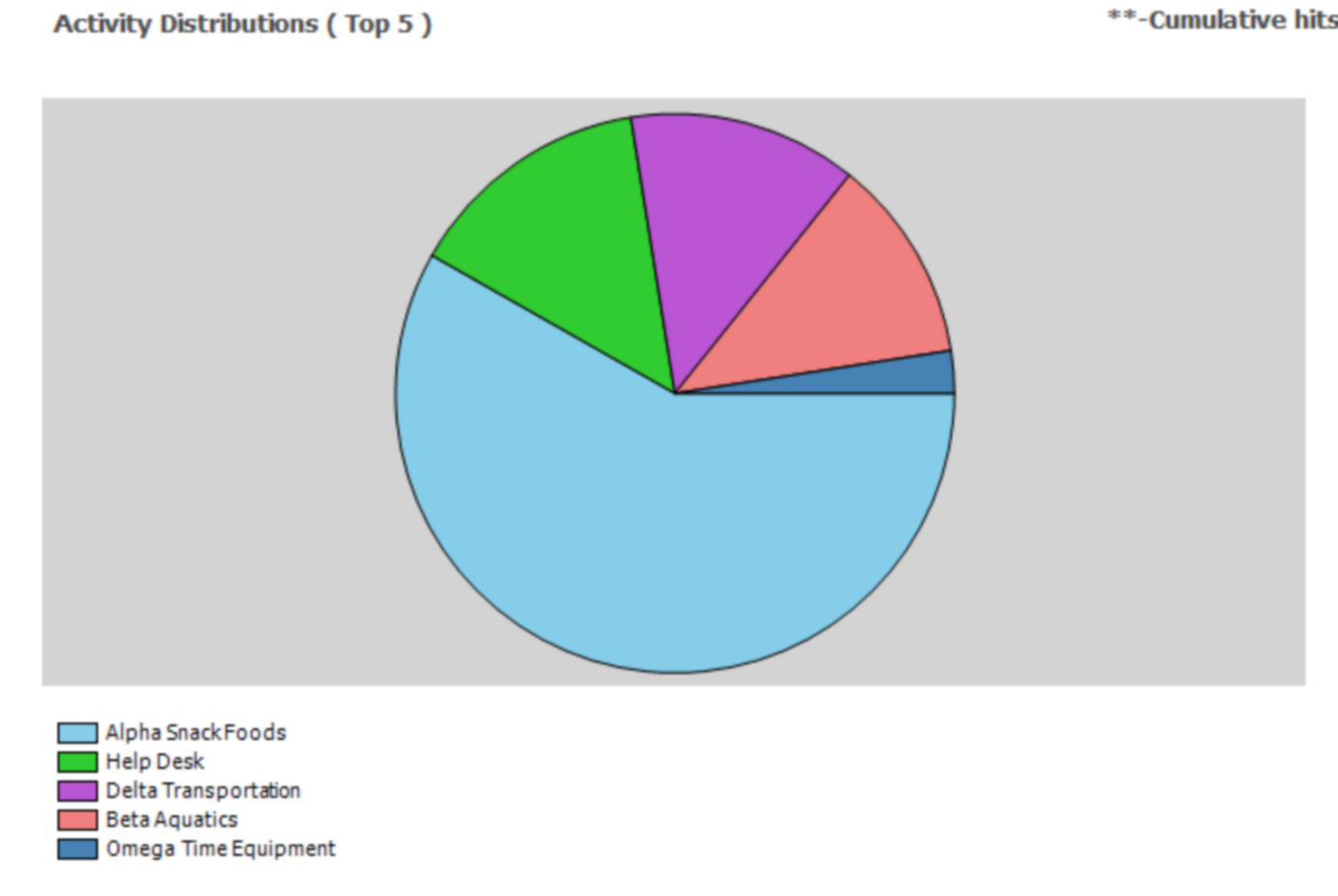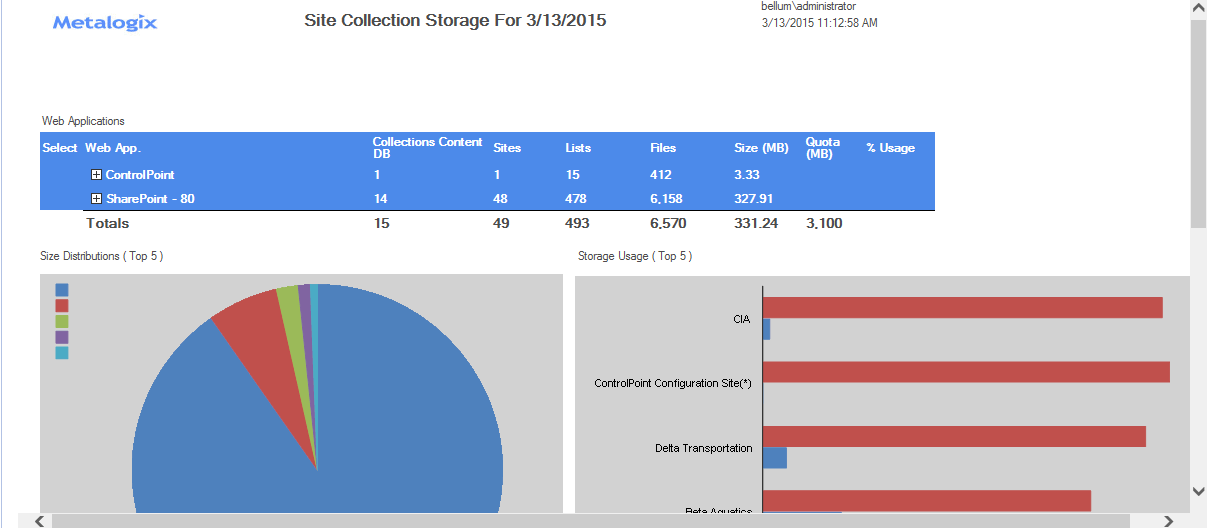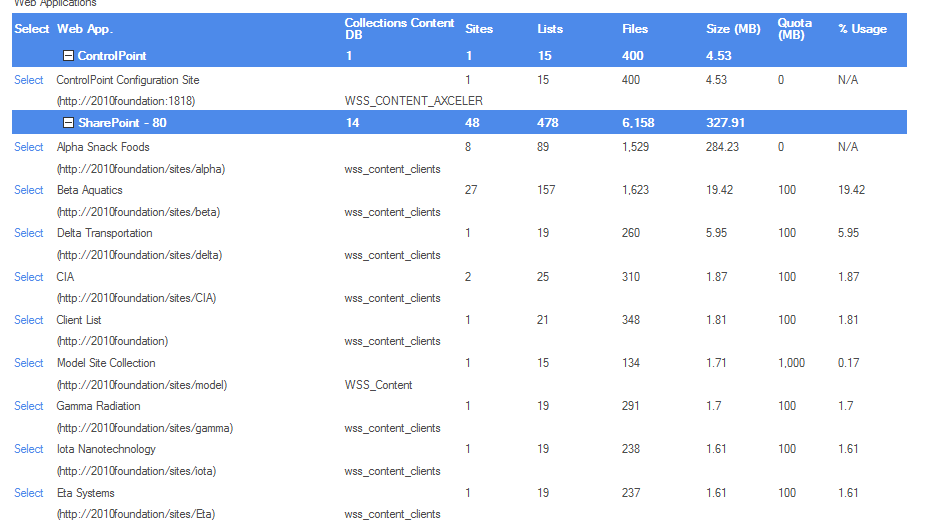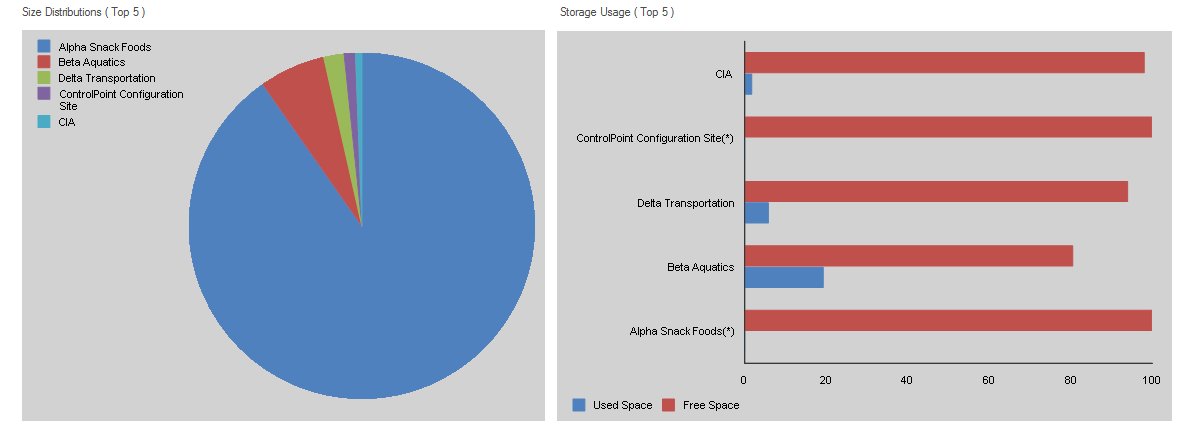Generating a SharePoint Hierarchy Report
The SharePoint Hierarchy Report lets you view and print the hierarchy of site collections, sitesand optionally, listswithin a SharePoint farm. You can generate this report for the entire farm or for selected objects within the Hierarchy.
Information in this report is current as of the last Discovery.
EXCEPTION: If you ran the report at the site level and Include Children is checked, the report will be run on real-time data.
In a multi-farm environment, this analysis can only be run on the home farm.
To generate a SharePoint Hierarchy Report:
1Select the object(s) that you want to include in the report.
2Choose Configuration > SharePoint Hierarchy.
3Specify one or more parameters for your analysis:
|
If you want results to ... |
Then ... |
|---|---|
|
include lists and libraries within sites |
check the Include Lists box. NOTE: If you check this box, ControlPoint must iterate through all lists. Depending on the scope of your analysis and the number of lists within that scope, processing time may increase noticeably. |
|
include folders and items within sites |
check the Include Folders and Items box. NOTE: If you check this box, ControlPoint must iterate through all list items. Depending on the scope of your analysis and the number of items within that scope, processing time may increase noticeably.
|
|
display the url for each site collection and site to the right of each site name |
check the Display URLs box. NOTE: If you leave this box unchecked, only the names of the site collections and sites will display. |
|
include objects whose permissions are unique (not inherited) |
check the Unique permissions only box. NOTE: If you check this box, objects will be shown within the context of the hierarchy, even if the parent object has inherited permissions. |
Now you can:
·run the operation immediately (by clicking the [Run Now] button)
OR
·schedule the operation to run at a later time or on a recurring basis.
OR
·save the operation as XML Instructions that can be run at a later time.
.
The top level displays all Web applications within the scope of your analysis.
When expanded:
·the name of the object and its Type (site collection, site, list, item, and so on) displays
NOTE: If you chose to Display URLs, the url for each site collection and site displays in parentheses to the right of its name.
·a plus sign (+) identifies each object whose permissions are unique (that is, not inherited from the parent objects).
Analyzing Site Collection Activity
The Site Collection Activity Analysis provides activity statistics for selected site collections, including:
·the distribution of activity among site collections selected for analysis, and
·the number of top site collections (that is, site collections within the scope of your analysis with the most activity).
Site Collection Activity analyses use cached data collected by ControlPoint Discovery.
To generate a Site Collection Activity Analysis:
1Select the object(s) (tenant or site collections) for which you want to analyze activity.
2Choose Activity > Site Collection Activity Analysis.
3Specify the parameters for your analysis.
Note that, in addition to the "standard" parameters:
§A Number of Top Sites to show in Graph must be specified. The value in this field (which is 10 by default, but may be changed) represents the number of site collections with the most activity that you want to examine more closely. These sites are listed in a separate section at the bottom of the analysis Results section.
NOTE: If you want to perform an analysis that focuses exclusively on top site collections that meet specific activity or storage criteria, you can generate a Most/Least Activity Analysis.
Now you can:
·run the operation immediately (by clicking the [Run Now] button)
OR
·schedule the operation to run at a later time or on a recurring basis.
OR
·save the operation as XML Instructions that can be run at a later time.
The Activity Report displays the following sections:
§Web Applications
§Activity Distribution
§Top Site Collections
Web Applications Section
The Web Applications section lists the following statistics for individual Web applications, as well as cumulative totals:
§the number of Collections, Sites, and Lists in each Web application
NOTE: The number of Lists includes both user-created (visible) lists and internal (hidden) lists, such as galleries, that are necessary for the functioning of the site. for the specified day or time period.
Most statistics are hyperlinked to relevant SharePoint pages for Usage (for a MOSS or 2010 Foundation farm) or Web Analytics (for a SharePoint 2010 Server farm).
When expanded, statistics for individual site collections within each Web application displays, including:
·the site collection name (with a hyperlink for generating a ControlPoint Site Activity analysis for the selected site collection/time period.)and url
·the number of Sites and Lists within the collection
· the Avg. Unique Users/Day who have visited the site collection for the specified day or time period (That is, any user who has more than one set of permissions to a site is only counted once.)
·the number of Requests that the site collection has received for the specified day or time period.
·the date when the site collection was Last Accessed (within the date range specified by the analysis).
Activity Distribution Section
The Activity Distribution section consists of a pie chart that depicts the distribution of activity among the Web applications returned by your analysis.
NOTE: If the analysis was generated for a single Web application, the pie chart will show the distribution of activity among site collections within that Web application.
Top Site Collections Section
This section shows statistics for the site collections within the scope of your analysis with the most activity. The number of site collections that displays in this section is determined by the value you entered in the Parameters section for Limit Display to.
NOTE: The Last Accessed date shows the last time the site collection was accessed within the date range covered by the analysis. Any activity that occurred before or after the specified date range will not be reflected in results.
Note that any site collections that have been deleted since ControlPoint Discovery began collecting data will display at the top of results, along with the word "Deleted."
Analyzing Storage
ControlPoint offers the following analyses that enable you to examine storage usage for a specific date or time period:
·Site Collection Storage Analysis shows storage usage for one or more site collections.
·Storage by File Type shows the amount of storage used by file extension.
You can also analyze trends in storage use over a specified time period. See Analyzing Trends.
Analyzing Site Collection Storage
The Site Collection Storage Analysis provides storage statistics for selected site collections, including:
·the distribution of storage among Web applications selected for analysis, and
·the number of top site collections (that is, site collections with the scope of your analysis using the most storage).
To generate a Site Collection Storage Analysis:
1Select the object(s) on which you want to perform the analysis.
2Choose Storage > Site Collection Storage Analysis.
3Specify the parameters for your analysis.
Note that, in addition to the "standard" parameters, a Limit display to must be specified. The value in this field (which is 10 by default, but may be changed), represents the number of sites using the most storage space that you want to examine more closely. These sites are listed in a separate section at the bottom of the analysis results.
Now you can:
·run the operation immediately (by clicking the [Run Now] button)
OR
·schedule the operation to run at a later time or on a recurring basis.
OR
·save the operation as XML Instructions that can be run at a later time.
The Site Collection Storage analysis consists of the following sections:
·Web Applications
·Size Distributions
·Storage Usage
·Top Site Collections
Web Applications Section
The Web Applications section lists the Web application(s) within the scope of your analysis, along with the following statistics for individual Web applications and cumulative totals:
·the number of site Collections, Sites, Lists, and Files.
NOTE: Because of restrictions on some data that Microsoft provides for Office 365 Germany, US Government GCC High, and DoD customers, for any of these environments Files will always show 0.
·the Size, in megabytes (MB) of storage used.
NOTE: Size includes content but excludes logs, metadata and other storage overhead. It is not meant to reflect the size of the content database.
When expanded, these statistics display for individual site collections, along with:
·the Content DB used by the site collection
·Quota in megabytes (MB)
·%Usage relative to the quota.
Size Distributions and Storage Usage Sections
The Size Distributions section consists of a pie chart that depicts the size distribution among the Web applications within the scope of your analysis. (If you generated the report for a single Web application, the chart will appear solid.)
The Storage Usage section consists of a bar chart that shows the amount of storage space used by each Web application relative to the Web application's quota.
NOTE: If a quota has not been set for the Web application, Used Space will not be captured.
Top Site Collections by Size
This section shows statistics for the site collections using the most storage space. The number of site collections that display in this section is determined by the value you specified for Limit display to.








